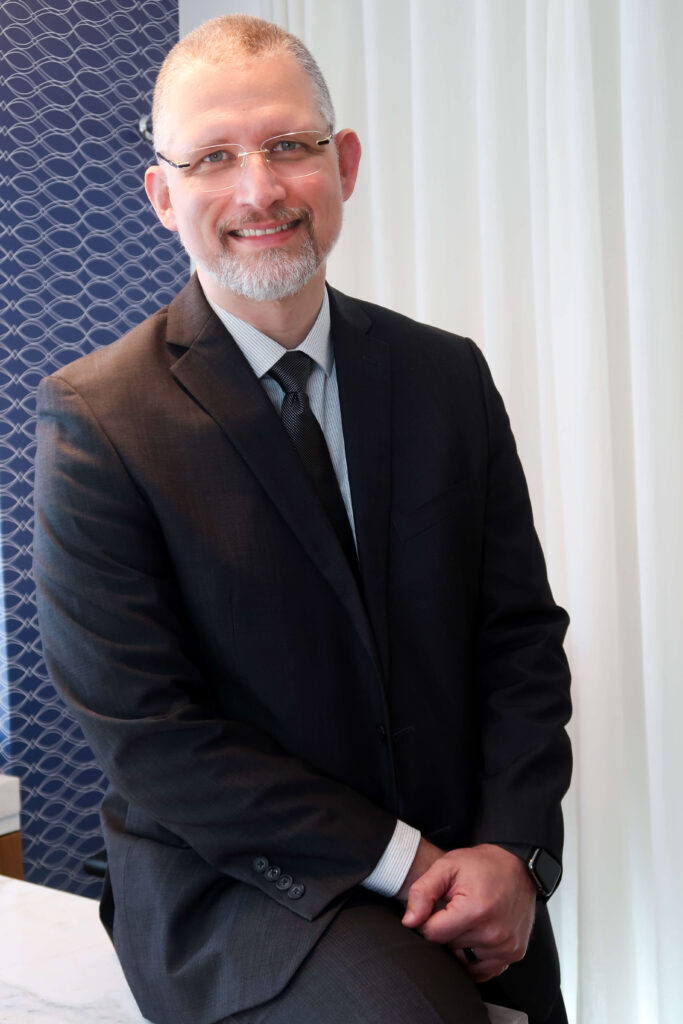Breast surgery
Breast Augmentation (Silicone)
Breast augmentation surgery consists of placing a silicone prosthesis of a predefined size and shape in a space created in the bilateral breast regions.
It can be performed through at least four access routes (incision, which will leave a final scar): Axillary, Submammary, Transareolar-mammary and Periareolar. Each has its advantages and disadvantages.
The space created in the breast region for positioning the implants can be: Retro-mammary (behind the gland) or retro-muscular (behind the pectoral muscle). Each has its advantages and disadvantages.
Silicone implants are produced by a number of national and international companies, all with roughly the same qualities and with little variation in price.
Because they are made of inorganic material, prostheses cause few reactions in the human body. These are called foreign body reactions, which aim to isolate the implant by creating a fibrous (cicatricial) membrane or capsule around it.
Further information about Breast Augmentation - Silicone Implants
- Silicone implants do not cause breast cancer or any other disease. It also doesn’t hinder mammography, as there are techniques for doing it in patients with prostheses.
- If changes occur in the breast after the prosthesis has been fitted, ultrasound or MRI scans may be necessary to elucidate the diagnosis.
- Breast trauma not only puts mechanical stress on the prostheses, which can lead to their rupture, but it can also accelerate the process of capsular contracture or cause hematomas that may have to be drained.
- Scars evolve according to individual physiology, usually becoming barely noticeable, especially in the penumbra. If changes do occur, there are treatments that can be used in an attempt to improve the appearance of the scars, including disguising the areola and the scar with pigmentation.
- Purple spots (bruising), partial or total, temporary or permanent loss of sensation in the breasts may occur.
- Breastfeeding is generally not affected.
- You will become a person with bigger breasts, subject to everything that someone who has always had big breasts is subject to. Therefore, continuous use of the bra is recommended.
- The breasts will fall out over time. You’re adding weight to an organ that is essentially supported by the skin, so AS THE YEARS GO BY, THE BREASTS WILL FALL OFF.
- Breast augmentation does not lift the breast, it enlarges the breast. If there is a small amount of sagging, this can mean a certain degree of lifting, but if there is a lot of sagging, this will not happen.
Preoperative Breast Augmentation (Silicone Implant)
- 1. Obey the instructions given for admission
- 2. Report any abnormalities that may occur in their general condition.
- 3. Enter hospital fasting for at least 8 hours and do not bring valuables into the hospital.
- 4. Come accompanied to the hospital.
- 5. Avoid wearing earrings, rings, piercings, colored nail polish, etc. Any of these will be removed before surgery.
- 6. The bra should be taken to hospital.
Postoperative Breast Augmentation (Silicone Implant)
- 1. avoid exertion for 30 days.
- 2. Do not raise your arms or carry any weight for 30 days, unless specifically advised by your surgeon. (Elbows close to the body.)
- 3. Get up as many times as recommended on discharge from hospital, observing the periods of sitting and avoiding maximum effort.
- 4. Do not expose yourself to the sun or cold for at least 14 days.
- 5. Obey the doctor's prescription.
- 6. Return to the office for subsequent dressings, on the days and at the times stipulated.
- 7. Don't worry about the intermediate forms in the various phases. Ask your surgeon any questions you may have.
- 8. Normal diet (except in special cases). We recommend a high-protein diet (meat, eggs, milk) as well as fruit.
- 9. Wait to go on your "diet or slimming regime" once you've been cleared by your doctor. Anticipating such conduct on your own could lead to difficult consequences.
Other breast procedures
Before and after - Silicone breasts
Surgeries and procedures performed by Dr. Celso Boechat
Other Plastic Surgeries in Rio de Janeiro
From stunning beaches to vibrant aesthetics, discover the plastic surgeries that reflect Rio de Janeiro’s beautiful spirit and dynamic aesthetic standards.
Breast surgery
Raise your self-esteem, reaffirm your beauty.
Body Surgeries
Transformations for your ideal body.
Facial surgery
Facial renewal, bring out your true expression.
Silicone breast implants
Breast augmentation: The most asked questions about silicone breast surgery
There are five types of silicone breast implants: low profile, moderate profile, high profile, super high profile and anatomical. The choice of format depends on the patient’s individual needs and goals.
Modern silicone prostheses are durable and don’t need to be replaced periodically, unless they have problems such as rupture or rejection. Currently, prostheses have guarantees that can last more than 10 years, offering patients greater security.
Placing the prosthesis under the muscle (submuscular) is more discreet and avoids marking the neck, but can be more painful during recovery. Placement above the muscle (subglandular) is less painful, but can result in a more marked and voluminous appearance.
The silicone breast scar can be made through the areola (periareolar) or below the breasts (inframammary incision). The choice of technique depends on the patient’s preferences and the type of result desired.
Not usually. Loss of sensation in the breasts after implant placement is rare and, when it does occur, it is usually temporary. Sensitivity can be affected especially during the post-operative period.
The most common type of anesthesia used for silicone breast implants is epidural with sedation or local anesthesia with sedation. The type of anesthesia chosen can vary according to the patient’s preferences and the plastic surgeon’s recommendation.
Placing a silicone prosthesis in the breasts generally does not impair the ability to breastfeed, especially when the incision is made below the breasts. However, it is important to discuss this concern with your plastic surgeon before surgery.
There is no scientific evidence linking silicone breast implants to the development of breast cancer. Modern implants are considered safe, but it is important to have regular follow-up examinations.
Possible risks of breast augmentation
LARGE MAMMOPLASTY, like any other surgery, has risks and complications, some of which are specific to it and others which are generic to any type of surgery. These include:
Generic
1. Allergies: Some medications or products used during surgery can cause allergic reactions, which can even lead to death. Allergic reactions are patient-dependent and can occur either to medicines or products that the patient has never had contact with, or to those that they have had previous contact with, even if they didn’t have a previous reaction.
2. Infection: Our body is colonized by countless bacteria, with which, at first, we live in extreme harmony. However, after surgery, they can cause infection, requiring treatment with antibiotics and rarely re-operation. In the case of prostheses, the prosthesis may be lost, but can be reinserted once the process has healed.
3. Hematoma: Accumulation of blood in the operated area, from a vessel that was not bleeding at the end of the operation, but did so in the immediate post-operative period. It can be treated by aspiration with a syringe and needle or, rarely, re-operation may be necessary.


Book your appointment
Find out everything you need in one consultation


Appointment
Make an appointment and get your questions answered
Schedule an appointment with plastic surgeon Dr. Celso Boechat. Discover the path to aesthetic transformation and improved self-esteem. Our specialized team is ready to guide you through the procedure options, answering your questions and creating a personalized plan to suit your needs. Book your appointment now and take the first step towards a more confident and radiant version of yourself.
Send a message via WhatsApp
Service and consultations
Call Us
(21) 997336862
Opening hours
Monday to Friday - 09:00 - 21:00
Saturdays and Sundays - Closed, only for surgeries



